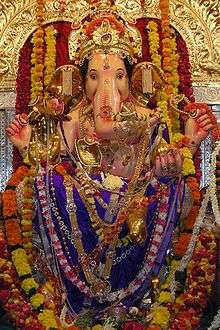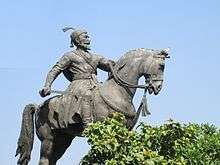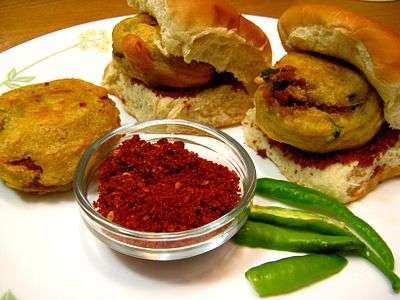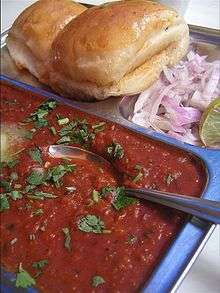Culture of Maharashtra

Maharashtra is the third largest state of India. It is known as the land of saints,[1] educationists and revolutionists, notable among them being Mahadev Govind Ranade, Swatantraveer Savarkar, Savitribai Phule, Bal Gangadhar Tilak and many others. It has long history of Marathi saints of Varakari religious movement which includes saints like Dnyaneshwar, Namdev, Chokhamela, Eknath and Tukaram which forms the one of base of culture of Maharashtra or Marathi culture. Maharashtra is also known for its purogami culture which translates as reformist or forward culture[2] which was started by earlier saints and led by Mahatma Phule, Shahu Maharaj, Dr.B. R. Ambedkar in modern times. Maharashtra has huge influence all over the world of 17th century King Shivaji of Maratha Empire and his concept of Hindavi Swarajya which translates self-rule of people.[3] The state of Maharashtra spans multiple cultures which includes cultures related to Hindus, Muslims, Buddhists, Sikhs, Christians etc. Lord Ganesha and Lord Vitthal are the traditional deities worshipped by Hindus of Maharashtra.
Maharashtra is divided into various' regions ; Marathwada, Vidarbha, Khandesh, Konkan, etc. and each region has its own cultural identity in the form of different dialects of Marathi language,[4] folk songs, food, ethnicity.
Overview


About 82% of Maharashtrians are Hindu, and there are significant Muslim, Christian and Buddhist minorities. The Maharashtrian culture consists of people from all a vast majority of religions. Due to it being huge areawise, many sub-regional cultures also exist in Maharashtra. The sub region of Vidarbha, was earlier a part of Madhya Pradesh, hence it has that influence upon its culture. There are many temples in Maharashtra some of them being thousands of years old. These temples are constructed in a fusion of architectural styles borrowed from North and South India. The temples also blend themes from Hindu, Buddhist and Jain cultures. The temple of Vitthal at Pandharpur is the most important temple for the Varkari sect. Other important religious places are the Ashtavinayaka temples of Lord Ganesha, Bhimashankar which is one of the Jyotirling (12 important shiva temples).
Historical Monuments
Ajanta and Ellora caves near Aurangabad are UNESCO World Heritage Sites and famous tourist attractions. Mughal architecture can be seen is the tomb of the wife of Aurangzeb called Bibi Ka Maqbara located at Aurangabad. Mumbai is the capital of Maharashtra with Humid climate throughout the year. The Gateway Of India, Chhatrapati Shivaji Terminus,Shaniwar Wada,Agakhan Palace and Deekshabhoomi are some of the historical monuments. Maharashtra has a large number of hill, land and sea forts. Forts have played an important role in the history of Maharashtra since the time of the Peshwas. Some of the important forts in Maharashtra are Raigad, Vijaydurg, Pratapgad, Sinhagad. Majority of the forts in Maharashtra are found along the coastal region of Konkan.
Religions, castes and sects
Marathi Hindus revere many religious figures. Among the figures who originated in the region are Banka Mahar, Bhagu, Damajipanth, Kanhopatra, Karmamelam, Nirmala, Sadna, Sakhubai, Satyakam Jabali and Soyarabai.[5]
Lifestyle
Folk Songs
.jpg)
The people of the state are known to wear different colorful types of costumes and there is variation in dance and music according to people's specific localities. Dance forms like Powada, Lavani, Koli with mesmerizing music and rhythmic movement entertain the people of Maharashtra.
Clothes
Traditional clothes for Maharashtrian males includes dhoti also known as Dhotar and pheta, while a choli and nine yard saree locally known as Nauwari saadi or Lugda is for women. Traditional clothing is famous in rural areas while traditional people from cities too wear these clothing.These clothes are worn by Maharashtrians while performing various festivals.
Food


The sweet foodstuffs like Puran Poli and Shrikhand are considered to be originated from Maharashtra. The Konkan and Varadi cuisines are popular with tourists. The specialty dishes of Maharashtran cuisines are often strong in pepper and spice; well-known dishes include vada pav, Pav Bhaji and Mumbai chaat and puneri missal, selucha chana.
See also
References
- ↑ "Sant Bhoomi Maharashtra". Retrieved 21 November 2015.
- ↑ "Maharashtra forward culture". Retrieved 21 November 2015.
- ↑ "Shivaji Maharaj, Founder and an Ideal ruler of Hindavi Swarajya". Retrieved 21 November 2015.
- ↑ "Languages in Maharashtra".
- ↑ Shepherd, P. 111 Gurus Rediscovered: